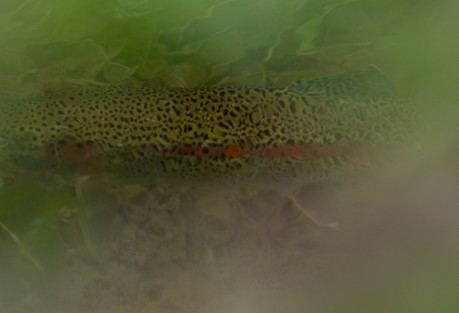 When summer comes around here in Northern California and the caddis get busy I look forward to fishing soft hackles and emergers. This means I can forget about worrying about a dead drift presentation for a while. Well, sort of anyway.
When summer comes around here in Northern California and the caddis get busy I look forward to fishing soft hackles and emergers. This means I can forget about worrying about a dead drift presentation for a while. Well, sort of anyway.
I look forward to heading down to the Lower Yuba River in the late afternoon, usually about 5:30 or so and fishing until dusk. What I’ll look for is a run that is below an active, semi-bouncy riffle with a run below it that has depth of 4 to 6 feet. If it has a distinct dropoff at the bottom of the riffle that’s even better.
On our local Lower Yuba River we can get a mixed hatch on most evenings. We can have micro caddis, larger summer caddis, mayflies, spinners and PED’s late.
I would highly recommend on of my favorite books, Wet Flies, by Dave Hughes, to any one who really wants to understand the principles of fishing and tying soft hackle flies.
Rigging for Fishing Soft Hackles
When rigging for fishing the summer evening hatches I want to give the fish options for what it wants to eat. I rigg to offer the fish different options with a visible dry or cripple as my first fly, an emerger or pupa for the second fly, and a soft hackle for the third, bottom fly.
The rigging method is as following.
(1) Rigg a 9 foot tapered leader off your 18″ to 24’ butt section off your fly line.
(2) Add a 24″ of 4x fluorocarbon tippet to the tapered leader with a surgeons knot leaving an 8 inch tag on the downward side.
(3) Tie your dry fly or cripple to the tag end. My favorite fly is a Quigley’s Cripple for this one.
(4) Add another 36″ piece of 5x fluorocarbon to the 4x tippet, leaving another 8″ tag on the downward side.
(5) Ties your emerger, pupa, or floating nymph that matches the hatch to the tag end. This selection will change depending on the hatch sequence and what the fish are locking into.
(6) Tie your favorite soft hackle at the end. I have been tying my soft hackles with a beadhead so the soft hackle gains depth during the drift and then sweeps up at the end of the drift.
Presenting the Flies
The goal when presenting the flies is to spot rising fish and preferably an individual fish to target. The fish typically are focusing on the emerging bugs and not the bugs on the top. You want to position yourself a good ways above the fish, 30 feet more or less, and about 10 to 20 feet inside of the fish. Careful and stealthy wading is important to gain the correct position.
First Option During the Drift
(1) The presentation cast will be across and slightly downstream to quartering downstream at the most. The best presentations will be quartered downstream.
(2)Target a spot about 10 to 15 feet above the targeted fish.
(3) Deliver your presentation cast and immediately make a big upstream mend. It also works well to cast the flies further than the line you want to fish and pull them back to just where you want them.
(4) Adjust your drift and them make another smaller mend.
(5) Dead drift your flies down to where the targeted fish is located.
(6) When you reach that zone, be alert for a take on the dry, a flash of a fish, or the dry to disappear like an indicator.
(7) Raise the rod tip smoothly if you see of even suspect a take.
Second Option on the Drift
If there is no obvious indication of a take try the next option.
(1) Present your flies as per the First Option.
(2) Throw small upstream mends from time to time to slow the drift of the flies.
(3) When your flies are in the zone, clamp of the line with your rod hand loosely with your finger tips. <br.
(4) Leave a loop of line that is about 10″ below the rod.
(5) Let the flies swing and rise in the water column. This is when to expect a time. If you feel a tug just let the loop of line slip out of your fingers and raise the rod tip. If you set to hard you will “rip the lip” or bust off.
(6) If there is no take let the flies swing to the point directly below you. let the flies dangle in the current. This is another point where fish will follow and then take.
Remember it is always best to carefully wade into a position where you can make a quartering downstream presentation rather than extending your cast to reach the fish and casting more directly across stream. Sometimes though your don’t have a choice if you are fishing right at a dropoff and the fish are up and feeding.
Final Thoughts
Using this technique is one of the funnest ways to fish an evening hatch and can bring you some of the most memorable fishing of the summer.
Good Luck!













